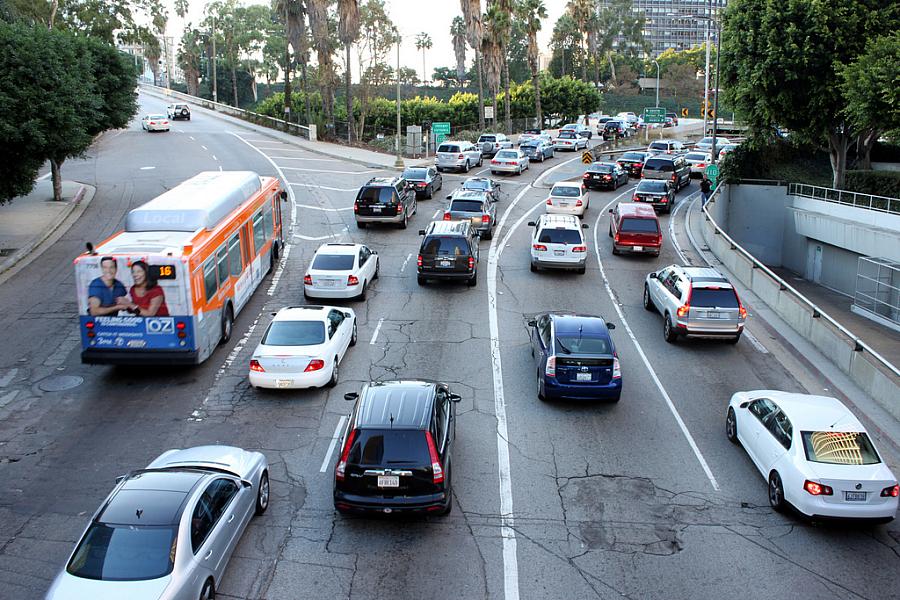Combo of tobacco smoke, road pollution tied to childhood obesity

Whether it’s the nationwide obesity epidemic or more individual weight struggles, the conversation on obesity tends to focus on the usual twin pillars: diet and physical activity.
Granted, there’s been a growing awareness in recent years that healthy eating and abundant exercise depend on far more than individual willpower alone. Grocery stores stocking healthy foods are typically scarce in low-income areas, while car-centric neighborhoods heavy on crime and poor in parks make exercise a forbidding prospect.
But a recent study published in Environmental Health Perspectives suggests there may be even more direct ways in which our external environment impacts obesity rates. Researchers at USC’s Keck School of Medicine have presented new evidence for the emerging idea that secondhand smoke and roadway pollution contribute to BMI increases and obesity in school children.
The evidence comes from data collected on 3,318 kids enrolled in the Southern California Children’s Health Study. Questionnaires asked parents about the level of tobacco exposure in homes, while exposure to roadway pollution was estimated for each child’s home based on traffic volume, distance and wind patterns. Meanwhile, the children were measured annually to gauge BMI levels, starting at an average age of 10 through age 18. (BMI levels estimate body fat based on height and weight. “Normal” weight scores range from 18.5 to 24.9, with higher figures considered overweight and 30 the threshold for obesity.)
After crunching the data, researchers found that exposure to high levels of roadway pollution alone was associated with average increases of 0.80 BMI units over the eight-year study span, while children with secondhand smoke exposure and low roadway pollution averaged 0.85 higher, compared with otherwise similar peers. But when investigators looked at children with high exposures to both tobacco smoke and air pollution, their BMIs were on average 2.15 higher over eight years.
“Our findings strengthen emerging evidence that exposure to tobacco smoke and [near-roadway pollution] contribute to development of childhood obesity and suggest that combined exposures may have synergistic effects,” the study’s authors write.
At this point, the health reporter’s inner skeptic will naturally start wondering about confounding variables. Might some other factor be responsible for these elevated BMI results among kids with higher exposure to pollution and smoking? For example, maybe parents who smoke and live near freeways are typically poorer and so less able to provide healthy food, and that’s the real culprit behind their kids’ weight gains.
To address those concerns, researchers use statistical techniques to “adjust” for the potential influence of confounders. In this case, the list of factors the study says it has ruled out is long: Team sports participation, asthma history, social makeup of family and neighborhood, parents’ education, neighborhood walkability, recreation facilities, population density, unemployment rates and so forth. The association among tobacco smoke, roadway pollution and body mass “were not substantially changed” by these other potential factors, the authors say.
Even so, it helps to remember that this is just one study — actually the first to examine the potential role of tobacco smoke and air pollution in combination. Researchers are just beginning to piece together the many ways in which these forms of “dirty air” are absorbed by growing bodies. Medical science doesn’t yet fully understand the links.
“It would be interesting to know more about the mechanism,” lead author Dr. Rob McConnell told the New York Times. “But the finding challenges the view that obesity is due solely to increased caloric intake and reduced physical activity. That’s not the whole story.”
This study may be novel, but it’s not the first piece of research linking exposure to tobacco smoke or air pollution to weight gain in kids. Previous studies have suggested that secondhand smoke is associated with increased obesity risk in children, and patterns of overweight children from mothers who smoked during pregnancy are well documented. An earlier study also found that prenatal exposure to roadway pollution is associated with higher BMI and obesity by age 7. Now we have reason to worry that these bad actors may be even worse when combined.
While socioeconomic status was ruled out as a “confounder” in this latest study, it still comes into play in a larger sense. After all, those lower on the economic ladder are more likely to smoke and more likely to live in neighborhoods bisected by busy roadways — the same neighborhoods where healthy food options are harder to come by and exercising more difficult. So while it may turn out that tobacco smoke and air pollution are just two of many variables driving the obesity epidemic, they’re factors that once again disproportionately affect people in communities already besieged by a similar array of risks.
Photo by Prayitno via Flickr.

